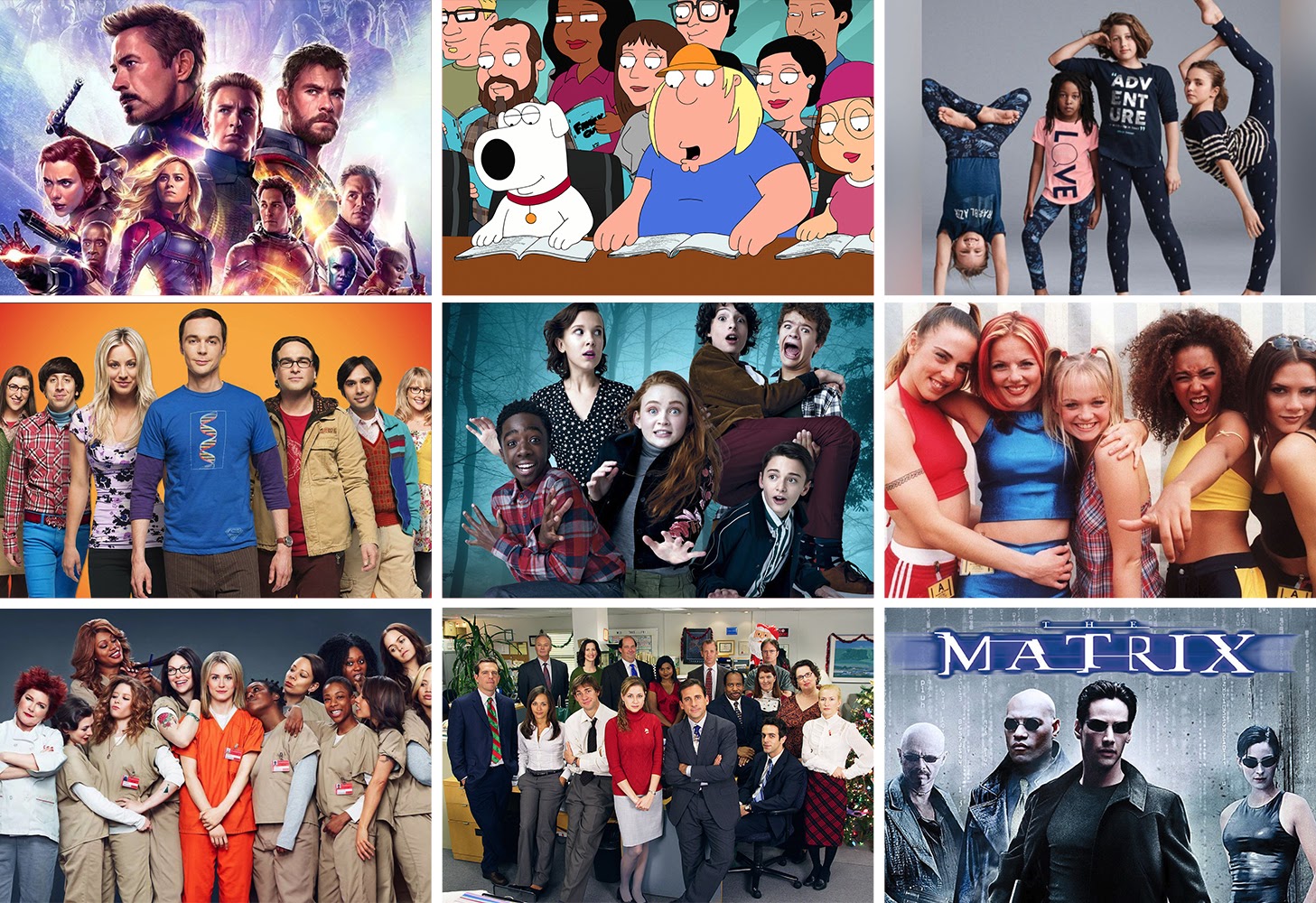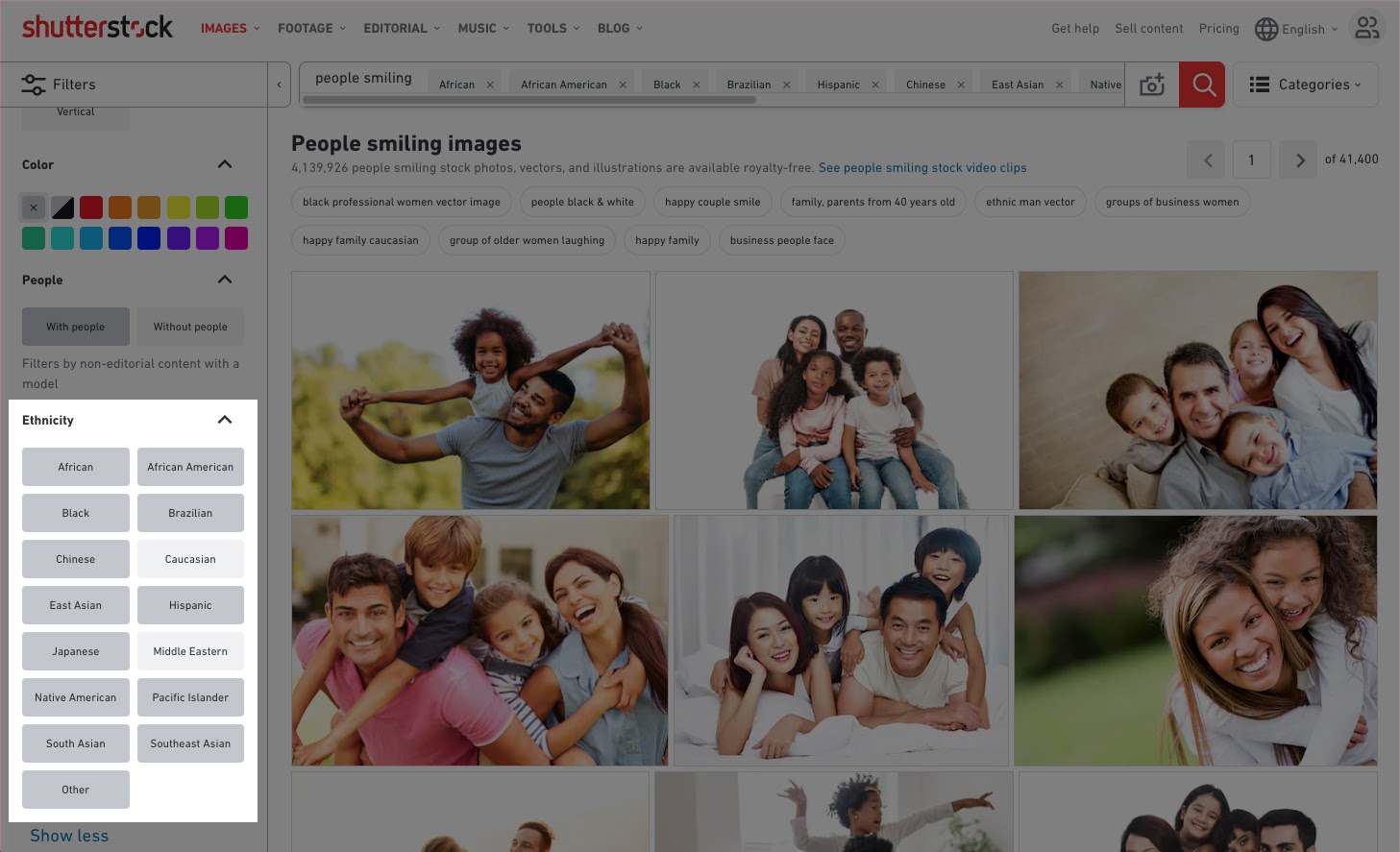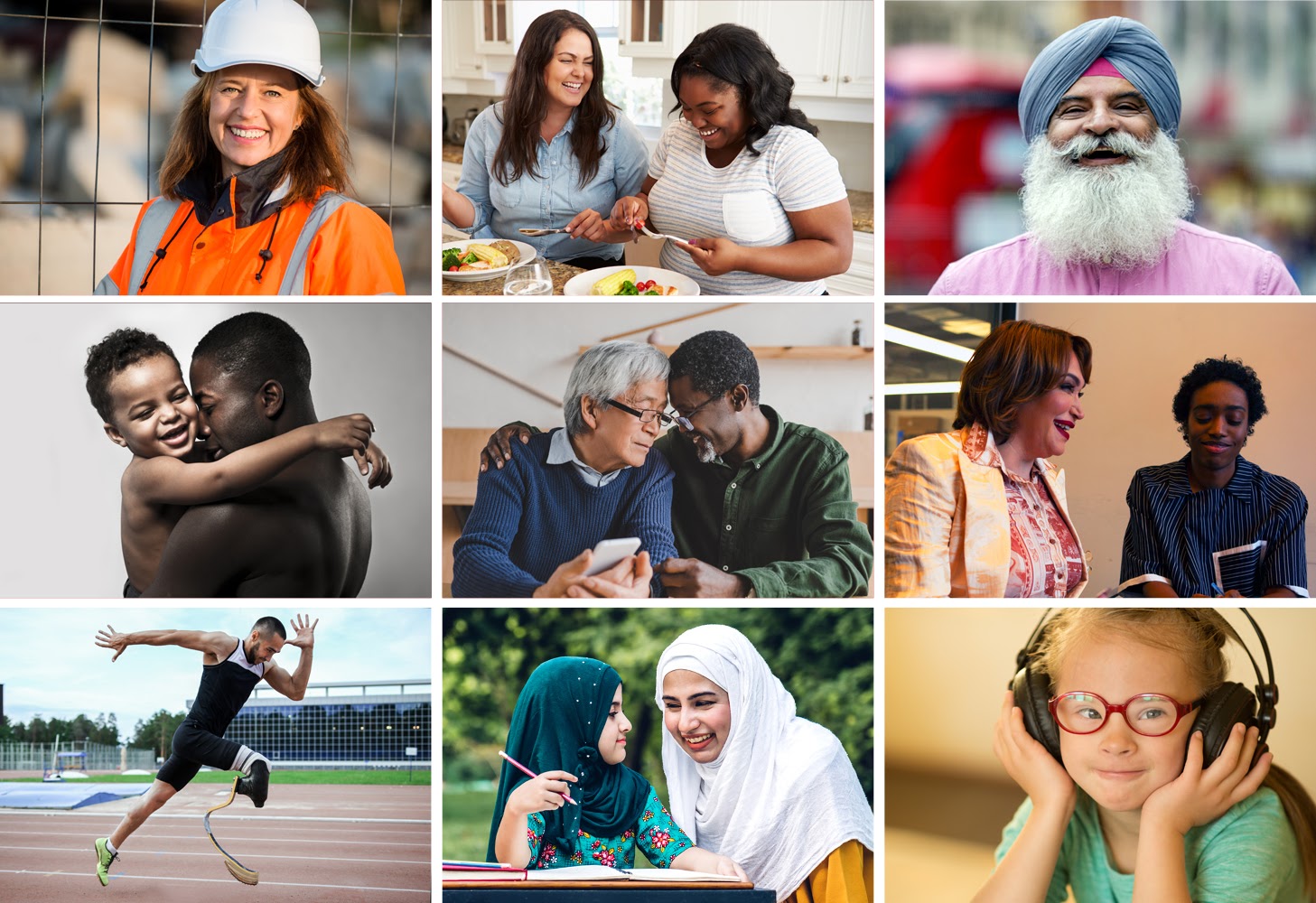Blog Insights
How to Choose Diverse and Inclusive Photos
Selecting photos for your brand in a deliberate and thoughtful way makes your organization more inclusive. It also has the power to make our culture more equitable for everyone.
This post was originally written in 2019 by Acacia Betancourt, a DC-area Creative Director, and former Forum One staff member.
Photographs are incredibly powerful, and they play a huge role in shaping how we see the world and the people around us. Every day, we constantly see photos of people—in social media, on websites, on television, in advertisements, in print, and in our daily environment.
In many ways, the photos we see in the media have created our culture for us, and have defined the standards of who and what is supposedly good, normal, and valuable. However, the media is not as inclusive of everyone as it could be due to biases, prejudices, and stereotypes that have been passed down for generations. Because of this, the images we consume are not an accurate depiction of reality.
The majority of the photos we see feature primarily Caucasian (or white) people who are typically young, attractive, straight, and able-bodied. And if the photos are meant to portray strength, power, leadership, or heroism, the main subject is usually male. This archetype serves as our “default,” as if it is what we are meant to strive for. Obviously, most of us do not fit this description, and real people are much more diverse than what our media projects. White people are most often depicted as the “main” characters, with minorities, underrepresented groups, people with disabilities, and sometimes women, shown as supporting characters.

Marketing images in pop culture—like TV shows, movies, music groups, clothing, and even cartoons—tend to include primarily white people as the focus. Seeing images like these everywhere shapes our perceptions about the world and about who is important and who is not.
The problem with non-inclusive imagery
Images that are not representative of everyone and that preserve the status quo are problematic because they perpetuate the inequalities of society. They can negatively affect how we see ourselves and our perceived worth if we don’t fit into the narrow “ideal” demographic that has been created for us. As Nicole Martins of Indiana University states in this HuffPost article, “There’s this body of research and a term known as ‘symbolic annihilation,’ which is the idea that if you don’t see people like you in the media you consume, you must somehow be unimportant.”
It may seem like a daunting task to choose and create images that are more diverse and inclusive, and to push against this common “default,” but it doesn’t have to be difficult. A bit of extra effort and awareness can go a long way. If we as individuals commit to learning how to recognize our own biases and how to interrupt them, we can start to shift our culture one photo at a time. The more we showcase real people of all kinds in our photography, the more engaged our audiences will be in the content we create, and the more inclusive our culture will become.
Let’s define what we mean when we say “diverse” and “inclusive”:
Diversity: The representation of distinct characteristics, lived experiences, and identities (both visible and invisible) that make a group different from another.
Inclusion: A culture where diverse perspectives are welcomed and valued. It enables individuals and groups to feel safe and respected for who they are and for their contributions.
While most media photos do not represent people accurately or inclusively, it is a fixable problem. Committing to choose and create photography that features different types of people and represents them as equals can already change our culture for the better.
Tips for choosing inclusive photos
With a bit of extra effort and care, it’s relatively easy to choose better photos that include more types of people. Here are a few guidelines to consider when choosing photos.
Learn to recognize your biases so you can work to interrupt them
The first step is to start acknowledging our biases and to realize when and how they influence our actions. Every one of us has biases, most of which have been fed to us through our culture. Every image you see in the media was chosen by a person whose view of the world has been shaped by their own experiences and biases. They may not even be aware of their biases and may have chosen to feature certain people over others because that’s what our culture has taught them to do. Kat Holmes, author of Mismatch: How Inclusion Shapes Design, says that “For better or worse, the people who design the touchpoints of society determine who can participate and who’s left out. Often unwittingly.” Many of the choices we make are heavily influenced by biases we may not be aware of, which can cause us to unintentionally perpetuate inequality. Learning to recognize your own biases and keep them in check will help you recognize and seek out more inclusive imagery.
Before you start your search for the perfect photo, take a quick inventory of what kinds of photos typically appear first in the list of results for your search terms. Open your stock photography website of choice and search terms like “pilot,” “person cleaning in the home,” “beautiful woman,” or “leader of a meeting” and take a critical look at the results. Note the types of people you see and how they are represented. Are they stereotypical in some way? Maybe the pilots are all white men and the people cleaning are all women. How many of the first photos that appear feature only white models? Who is missing? The more you observe and analyze the photos you see in the media that’s all around us, the better you will become at recognizing how homogenous, predictable, and stereotypical they tend to be.

Always make a “Demographic Checklist”
Each time we choose photos for a client, we run down a quick mental checklist to help ensure that we’ve included as many types of people as we possibly can. If you realize that your photos do not include someone on the list below, you can do a targeted search for a photo that includes them. The checklist is also useful for identifying when your photos include too much of one group and not enough of another. Are most of your photos only of women or only of people who look Caucasian? If so, which photos can you swap out for ones that feature people from the groups not yet included? It’s usually not possible to include someone from every single one of the categories below, but the more types of people represented from the checklist, the better.
- Races/ethnicities: African/Black, Hispanic/Latinx, Asian, Middle Eastern, Caucasian/white, mixed-race, among others.
- Genders: Women, men, transgender, non-binary, and other genders
- Ages: A range of ages from birth to old age
- Abilities: People with a wide array of different physical and mental abilities or disabilities
- Body types: A range of body types, sizes, and heights
Ask yourself questions to keep your bias in check
In addition to the Demographic Checklist, ask yourself a few simple questions when choosing a photo. These questions will help you more easily identify the groups of people you may be leaving out, recognize your own biases, and avoid stereotypes.
- Who is missing or excluded?
- Can any photos be swapped out for a different type of person?
- Would I want to be portrayed this way? If this was a photo of me or someone I love, would I be okay with how they are represented?
- Are any stereotypes being perpetuated in the photo I am using? Am I depicting someone in the role our culture typically puts them in or making a more unexpected choice?
- Can everyone who might view the photo see someone like themselves represented in it?
If you only ask yourself one question, perhaps the most important is “Who is missing?”. Underrepresented, marginalized groups of people are most often excluded from the images we see. If they do appear, they are often represented in a stereotypical way. Choose photos that intentionally put different kinds of people in the spotlight, and allow them to be the focus.
Use specific search terms and filters, and dig deep
When searching for a photo, it’s tempting to use the first good one you see at the top of the page. But is it as inclusive as it could be? Often the photos at the top of your search results will be the least diverse and will likely fall into the cultural “default” of young, attractive, straight, able-bodied, and usually white. You can get much better search results by using the filters available and the right search terms. For example, Shutterstock.com has ethnicity, age, and gender filters. The very first thing we do when we are searching for a photo is select all ethnicities except for Caucasian. This usually ensures that many more types of people will appear in the search results. Caucasian people will likely still be included in the images, but they will be supporting characters rather than main ones.

Another way to get better search results is to type in a very specific demographic that you have in mind. For example, if you have run through the Demographic Checklist and realized that you haven’t included someone who is Hispanic, you may type “Hispanic man smiling” into the search bar. It may feel a bit uncomfortable at first to type in a specific race, ethnicity, gender, body type, or disability (we often use search terms like “wheelchair,” “blind person,” or “large man”) but it is necessary in order to ensure that you are including as wide a range of people as possible.
In addition to using filters and keywords, it’s important to take the time to dig deep. Look at more than just the first page of results. We usually start by looking at the very last page of results first. The more photos you look at, the more kinds of people you will see in them. Rather than just choosing one of the first few you see, commit to taking a few extra minutes to really choose one that is a great photo AND is inclusive.
Pay close attention to photo composition, lighting, and cropping
Just because a photo includes many types of people doesn’t automatically mean that they are represented equally or in an inclusive way. Often the biases of photographers, photo editors, stock photo curators, and designers can show up in subtle ways. Choosing photos that may seem “diverse and inclusive” at first glance might actually be doing more harm than good. For example, the photo below depicts four people in a meeting. There are two men, and two women—both of whom are minorities. It seems pretty diverse if you describe it that way. When we take a closer look at the composition and focus of the photo, the white man is much larger and closer to us than the others, who are out of focus. The others, including both women who are the only non-white characters in the shot, are supplemental and secondary to the white male main character. While this photo does technically include a mix of genders and races, the way these people are depicted is reinforcing the “default” which is that men (specifically, white men) are the leading main characters at the forefront and everyone else is “other.”

When choosing or shooting photos, be very conscious of how the people are positioned within the photo. Where is the focus? Is the photo cropped in a way that prioritizes one person over another in a way that reinforces biases? Who are the “main” or “supporting” characters in the story the photo is telling? Are minorities or women in the photo smaller than or behind the others? Is anyone being tokenized (i.e., they have been included as a token—or symbolic effort of their underrepresented group in order to give the impression of diversity)?
Although this photo includes different genders and races and is a quality photo with good lighting, color, and composition, we still would not use it. Instead, we would intentionally try to find a similar image with a woman as the main character (ideally a woman who is also a minority) in the foreground or an image in which all of the people are roughly equal sizes and distances from the camera. This may seem like a subtle change, but it is small choices like this that have the power to shift our culture to be more inclusive.

Use diverse and inclusive stock photo websites
Below is a list of stock photo websites that feature free or affordable images of people from a wide range of races, ethnicities, genders, sexualities, abilities, and backgrounds. The creators of these stock photo collections have done the hard work of making more inclusive and diverse photos, and we can support them by purchasing, featuring, and crediting their images so they can continue to expand their libraries. Browsing their collections will give you a better idea of what diverse photos should look like, and what it means to be truly inclusive.
- TONL – “Culturally diverse stock photos that represent the true world we live in.”
- Nappy.co – “Beautiful, high-res photos of black and brown people, for free.”
- Broadly Gender Photos by Vice – People of all different genders in common, everyday scenarios.
- CreateHER – “Your destination for images featuring melanated women.”
- Jopwell Collection – “Original, free-to-download stock photography featuring diverse professionals.”
- Getty – Show Us (women as they really are) – “Devoted to shattering beauty stereotypes by showing female-identifying and non-binary individuals.”
- Reclaimphoto.com – “Committed to amplifying the voices of underrepresented photographers and decolonizing the photojournalism industry.”
- RawPixel.com – “Authentic Design Resources for Everyone.”
- Diversify.photo – Diversifying the photography industry by featuring photographers of color.
- Blackfemalephotographers – Black female photographers from around the world.
- WomenPhotograph – “Working to elevate the voices of women + non-binary visual storytellers.”
- Representation Matters: Body Liberation – “Stock photos for body size diversity and acceptance.”
- NativeAgency.org – “Native wants to change visual journalism to be representative of diverse talent from across the globe.”
- Stocksy – “Search art forward stock photos and footage with no filler.”
Adopt an inclusive mindset
It may be easier and faster to use images that don’t embody what it means to be inclusive. However, the benefits to your organization and to our culture can be huge if we all choose and use better photos in a more thoughtful, conscious, and careful way. “Images have a huge impact on imprinting and reinforcing our view of the world, and yet, most media professionals don’t spend half the time being as thoughtful about their images as they do about their words. Often, because of a lack of time and money, we look for the most cost-effective picture that ‘works,’ not examining how our use of a photo may be reinforcing harmful stereotypes.” says Minal Bopaiah in her article, The Paradox of Bias in Marketing and Fundraising. Make inclusive photography a priority at your organization, and communicate the value of it to your colleagues. Your audiences will appreciate it and it will make your brand materials much more engaging, interesting, and dynamic.
Using the tips we’ve outlined, you can start choosing photos that challenge the status quo. Put your own discomfort aside (discomfort is okay!) and simply try. Commit to spending a bit of extra time on each photo selection. Ask yourself questions that challenge your assumptions and help you fill in gaps. Find opportunities for minorities to be the protagonists in your photos and for white people to be supporting characters. Once you find a photo you like, run it by someone different from you (ideally someone who looks like the person featured in your photo) to see what they think. Choose unexpected and interesting photos that disprove stereotypes.

The best way to start choosing better photos is to observe the photos you see around you every day and ask yourself how a photo could be more inclusive. Learning to recognize who is habitually being highlighted and who is being excluded will teach you so much about the biases that seep into the images we see—which can be subtle but damaging. The goal is for the images we put out into the world to more closely reflect reality and to showcase what we really look like as a society. The more of us that put in the extra effort to care about choosing more inclusive photos, the more inclusive our culture will become for everyone. We are all different from each other, and we all deserve the chance to be the focus of amazing photography, no matter our background.